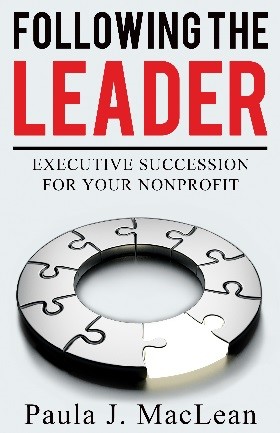FREE RESOURCES FOR EXECUTIVE DIRECTORS,
CEOs AND BOARD MEMBERS
Types of Nonprofit Boards - Options for Governance Models
Although the literature in this area is extensive, in essence there are three different types of boards or models of governance. They are: An Operational (or Administrative) Board A Policy-Governance (or Carver) Board A Policy Board Operational boards are useful when …
read more
Two Types of Performance Issues
There are two types of performance issues and also two reasons that an employee may not perform according to an employer’s standards or expectations. When an employee does not perform one or more specific job duties to the standards of quality and/or efficiency expected by the employer, this is determined …
read more
Tips for Surveying Staff Satisfaction – Part 1
This is the first of three blog posts covering a total of ten powerful tips for surveying employee engagement or satisfaction. The term “employee engagement” appears to be replacing “staff satisfaction” in much of the human resource literature. However, a leopard doesn’t change its spots! Staff satisfaction surveys and employee engagement surveys usually cover the same turf. Employee satisfaction is the single most important factor that determines …
read more
Management Has the Right to Manage
“A co-worker of mine applied for an internal promotion and did not get it. He threatened to quit and because he’ really good at his work, the manager decided to give him the promotion after all. Now everyone feels he didn’t get the job fairly and the whole place is fully of negative gossip.” Entrenched in every union agreement …
read more
10 Tips for Creating Emergency Succession Plans for Your Nonprofit
It may come as a surprise that more than 75 percent of nonprofits in Canada do not have either emergency or planned departure succession plans for the position of executive director or CEO. This month’s newsletter on emergency succession planning contains material excerpted from my new book “Following the Leader” …
read more
Managing Generational Diversity – 7 New Rules That Can Help!
I am a Baby Boomer – born between 1945 and 1964. When I was growing up, there were lots and lots of us. This did not seem at all problematic. The sandbox (and swing-sets and teeter-totters and merry-go-rounds) were crowded with kids. We learned …
read more
So What’s With This Younger Generation Anyway?
The Internet was alive this week with another round of stories about Generation Y and the struggle many appear to be having to make their way in the adult world of work and life. Gen Ys were born between 1986 and 2000, making the ….
read more
Tips for Surveying Staff Satisfaction – Part 2
This is the second of three blog posts covering a total of ten powerful tips for surveying employee engagement or satisfaction. The term “employee engagement” appears to be replacing “staff satisfaction” in much of the human resource literature. However, a leopard doesn’t change its spots! Staff satisfaction surveys and employee engagement surveys usually cover the same turf. Employee satisfaction is the single most important …
read more
Executive Succession and Transition – A Risk Management Strategy – 5 Tips!
Tip #1 Identify the four major areas of succession planning to be attended to: emergency succession planning, planned departure succession planning, creating a strong leader development program and board succession planning. Tip #2 Emergency succession planning and creating a leader development program are …
read more
Correct Employee Performance Issues Using a Verbal Warning
Disciplinary action or “progressive discipline” is used to assist employees to improve sub-standard job performance. Performance issues addressed by this process are more serious than those addressed using constructive critical feedback. The first step in progressive discipline is …
read more
Try Walking a Mile in Employees’ Shoes – You Might Learn a Few Valuable Lessons!
The hit reality TV show “Undercover Boss” follows managers of large corporations as they give up a soft boardroom chair for a week of hard work on the line. The jobs they must learn and the problems and people they encounter make for an interesting hour of viewing. At the end of the week, the manager “comes clean” with employees, offering …
read more
Slow Managers Aren’t the Same as “Slow Food”
Many readers will be familiar with the “Slow Food” movement in North America and Europe. World-class chefs and everyday kitchen cooks have been pushing back against fast, often unhealthy foods that have become part many North American’s lifestyles. Careful preparation, orchestrated service and slow consumption make dining a much more enjoyable and healthy experience. The organizational equivalent …
read more
10 Tips for Effective 360 Degree Performance Appraisals
In more than 35 years in the nonprofit sector, I have yet to meet a supervisor or manager who loves doing employee performance appraisals! One reason for this is that one person (the supervisor or manager) is required to “think-up” all the positive areas for feedback and recall any areas of concern that must be addressed for 10 or more employees year after year. Then there are the forms to be completed, meetings to be coordinated …
read more
Forms & Template Examples
ED Policy and Operational Report Template
Download a sample template in Microsoft Word …
read more
Committee Terms of Reference Template
Download a sample template in Microsoft Word …
read more
Board Meeting Assessment Form
Download a sample template in PDF format …
read more
Blank Board Application Form
Download a blank board application form as an example …
read more
Executive Directors Job Descriptions
Download a blank executive directors job description as an example …
read more
Board Skills Analysis Form
Download a board skills analysis form as an example …
read more
Board Recruitment Tips and Skills Checklist
Download a checklist as an example …
read more
Please note: The articles contained on this page are not intended as authoritative advice or direction. The author assumes no liability for how an individual or organization applies or uses any of the ideas contained in these articles.


















